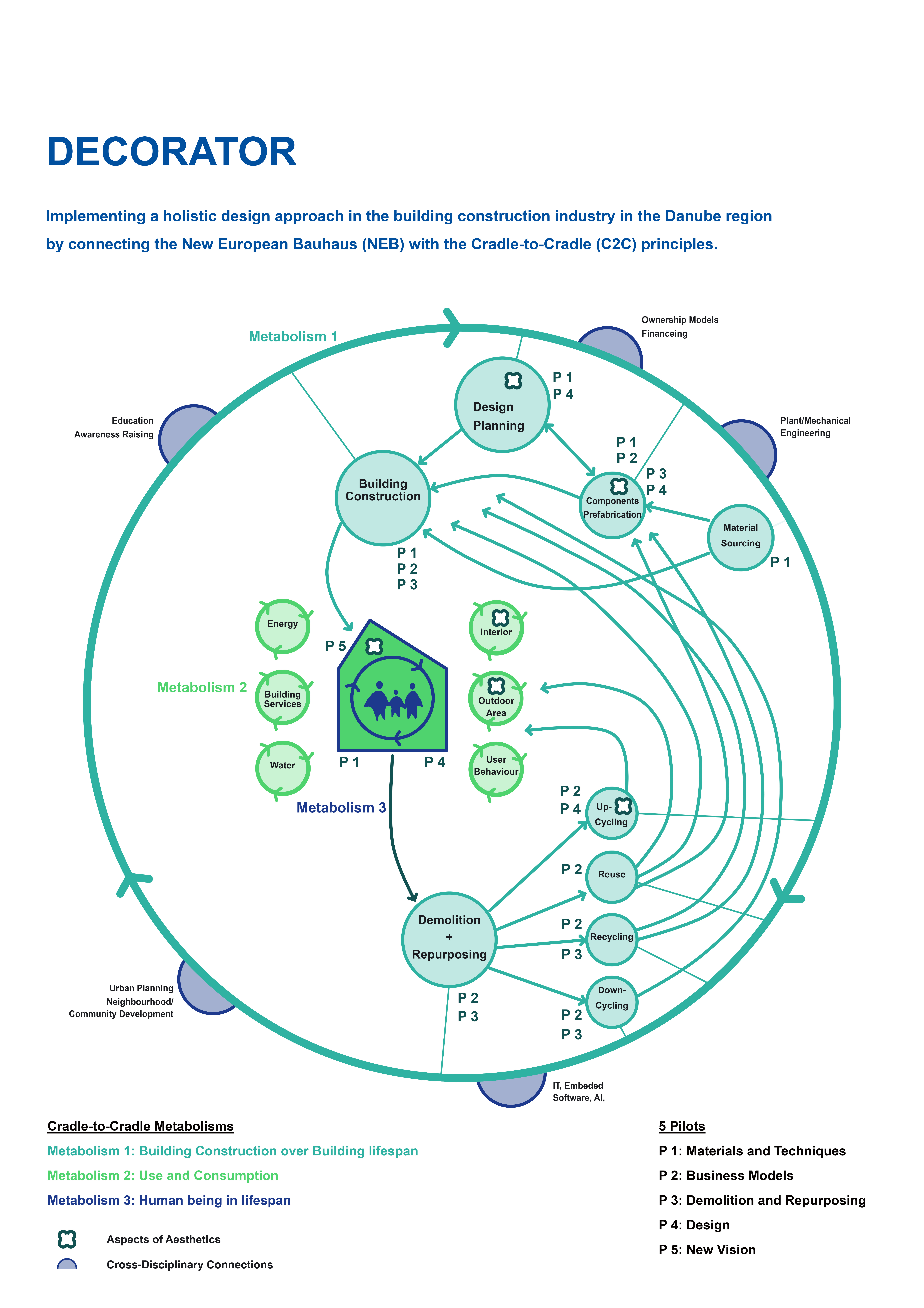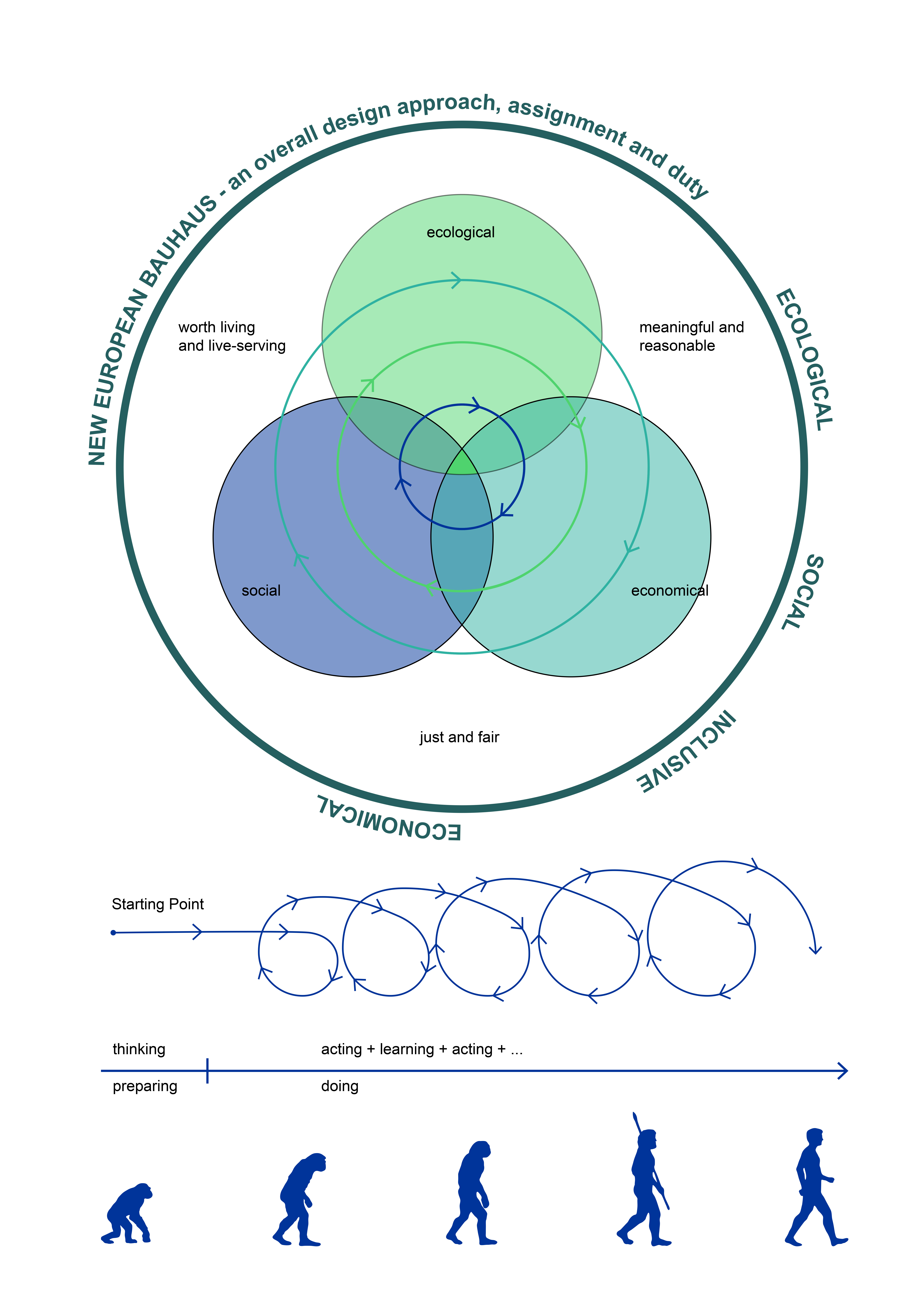The DECORATOR Model: A Guiding Framework for Circular Construction
DECORATOR model
The model isn’t just a framework—it’s a decision-making tool that supports the transition to circularity in the construction sector. Rooted in Cradle-to-Cradle (C2C) principles, it goes beyond incremental sustainability improvements, encouraging a fundamental shift towards truly circular practices.
Aligned with the New European Bauhaus (NEB), the model takes a holistic approach, integrating technical, aesthetic, cultural, and inclusive perspectives. It supports the twin transformation, ensuring that circularity becomes a reality across three key metabolisms:
- Building Construction Phase Metabolism
- Use and Operation Phase Metabolism
- Change of Needs in Human Lifespan Metabolism
To put the DECORATOR model into practice, we test and refine it through five pilot projects, experimenting with specific tools and approaches. These pilots provide valuable insights to further develop and adapt the model for real-world applications.
The DECORATOR model describes not a recipe, but a consistent decision-making chain aimed at implementing circularity in the construction sector. Cradle-to-Cradle does not mean achieving a slight improvement in sustainability; it demands a radical rethink where excuses are not an option. Therefore, the DECORATOR model is a tool that acts as a companion for decision-making in the construction industry, facilitating the circular economy by fostering the twin transformation.
Output Factsheet
Aesthetics in the DECORATOR Framework
The aesthetic aspect of the New European Bauhaus is central to the DECORATOR project. Rooted in Cradle-to-Cradle principles, the project combines sustainability, functionality, and beauty with a strong focus on ethical values and inclusion. By including artistic approaches, it fosters innovative solutions that are culturally resonant, socially inclusive, and environmentally conscious, aligning aesthetics with ethics for a circular approach.
Therefore, the emphasis on aesthetics within DECORATOR goes beyond functionality, aiming to create spaces that are both aesthetic, inclusive and sustainable. Aesthetics are particularly addressed in:
• Design/Planning: Ensuring that the visual appeal is integrated from the start.
• Components and Prefabrication: Balancing the aesthetic quality with sustainability.
• Interior Design: Choosing circular materials and arrangements that enhance both comfort and style.
• Outdoor Areas: Utilizing greenery and landscaping to create pleasant, biodiverse surroundings.
• Up-cycling: Transforming old materials into aesthetically appealing new and use- and meaningful products.


